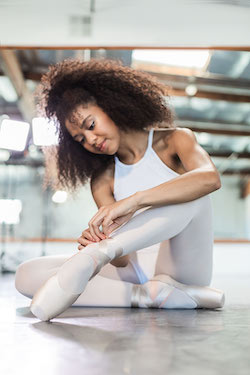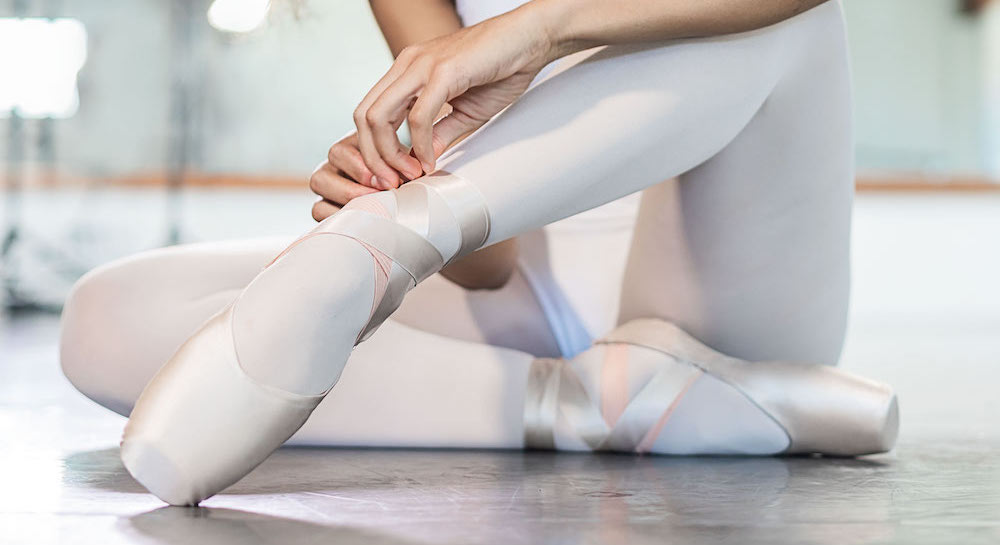You’ve got your pointe shoe routine down to a science… Sewing ribbons, breaking in shanks and taping your blisters so that your time on your toes is both efficient and enjoyable. But dancing en pointe is incredibly stressful on the body, no matter how practiced you are. You might be surprised to learn that the pointe shoe itself has remained relatively unchanged for over 200 years (and ballet’s been around for 200 years prior to that…actually with heeled shoes at one point). But modern and exciting innovations are finally saving our soles thanks to a new pointe shoe by Só Dança. But before we get to that, let’s look back on how the pointe shoe came about so we can really appreciate where it’s going.
The history of the pointe shoe
Ballet and pointe shoes might seem inseparable today, but the art of ballet actually came about 200 years before ballerinas began dancing on their tip toes. The Royal Academy of Dance was founded in France by King Louis XIV in the mid-17th century. While ballet was practiced all throughout Europe, this Academy helped codify the language of the art form (which is why ballet terminology is in French). As ballet grew out of the social court dances, both male and female dancers wore heeled shoes. This, as you can imagine, inhibited a lot of movement. The heel was “dropped” in the early 18th century, and the more formal shoe adjusted to allow for greater articulation of the foot (think of demi-pointe ballet slippers that we have today).
In the late 18th century, choreographers began experimenting with wires and harnesses to elevate dancers from mortal to ethereal. Dancers also began stuffing their shoes with padding to get higher and higher on relevé. Soon after, alterations started being made to the shoes themselves to make this toe work more possible. The pointed-tip shoes were swapped with a study front platform, a layered fabric “box” to encase the toes and a stiffer (but silent) sole. What we consider “modern day” pointe shoes are even stronger and sturdier than those early versions — which allows for more time dancing en pointe (more pirouettes, longer balances).
Surprisingly, the pointe shoe has remained relatively unchanged over the past 200 years despite the increasing demands of modern ballet dancing. A professional ballerina can wear up to 120 pairs of pointe shoes in a year and will often “alter” her shoes depending on a particular role (breaking them in more or stiffening them to last longer). Dance shoe companies provide the pointe shoes — the tools for the art — but it is often the dancer’s responsibility to mold and shape the shoes to fit her needs (and to care for her feet with tape and toe pads).
But you might have gotten wind of an innovative new pointe shoe on the ballet scene — the Elektra by Só Dança. In short, the Elektra is a marriage of 200 years of tradition and groundbreaking revamped technology. What makes the Elektra different, you ask? Let’s break it down.
#1. Engineering

Só Dança’s Elektra pointe shoe.
The Elektra’s ring provides strength and stability while giving a dancer comfort she can only imagine. This unique shoe features a U-shaped box for unbeatable strength with a V-shaped opening for the most beautiful line of a dancer’s foot. Research shows that this juxtaposition actually fits the foot shape of the majority of people in North America (a wide metatarsal pad, narrow heel and flexible instep). This duality within the toe box allows a dancer to seamlessly roll through her demi-pointe all the way up on her block while still getting the flattering line of the tapered-front. The pliability makes the shoes feel already broken in, but they still look elegant and pristine.
Despite its spectacular features, the look of the Elektra is minimalist and pure. There are no side seams or drawstrings. Instead, the Elektra has an elastic casing to take pressure off dancers’ Achilles tendons and heels. Inside the shoe is a foot-encasing foam layer. As a result, there is no need for toe pads! And the shoes are lined with odor-resistant, moisture-wicking fabric (so long, smelly feet!).
#2. Customization
The Elektra is the first customizable toe shoe with an interchangeable shank system. The shank is the stiff insole that supports the arch of the foot. With the Elektra, dancers have the opportunity to choose from a variety of different shanks (a range of levels from “firm” to “flex). The shanks are easily switchable…pick a different shank for each foot or swap out your “firm” shanks for “flex” if you’re performing a more agile variation with lots of jumping and need quick, quiet feet. But if you need arch stability for a partnered adagio, you might go for a firmer shank for that variation. The Elektra has so much to offer the pre-professional and professional dancer — from wearing it with no shank (resembling a soft block) to being incredibly strong and solid for dancers executing multiple pirouettes and sustained choreography.
#3. Pure fit
The Elektra embodies minimalism at its finest. The less extraneous materials placed inside a shoe, the purer and more natural the fit will be (with a lesser need for toe pads and tape). This pure fit allows the dancer to have even more of a connection to the floor.
#4. Injuries
Due to the fact that there is no direct pressure on the heel area usually caused by a tightly pulled drawstring, this will greatly minimize the risk of tendonitis, bursitis and bone spurs. Based on the carefully engineered properties of the Elektra, the shoe will fundamentally not break down. With that being said, dancers will never be en pointe in soft/unsupportive shoes and thereby minimize the possibility of suffering from stress reactions and stress fractures.
Close your eyes and imagine a pair of pointe shoes that are customized just for you. No more spending hours to find the right shoe for your unique foot, breaking them in with crazy tools and techniques, and caring for consequential aches and injuries. Sounds like a dream, right? Well, the Só Dança Elektra pointe shoe has made that dream a reality. Customizable, personally tailored elements are not just for professional ballerinas anymore. The Elektra allows for a unique, perfect fit for all dancers.
For more information on Só Dança’s Elektra pointe shoe, visit www.sodanca.com/elektra.
By Mary Callahan of Dance Informa.















